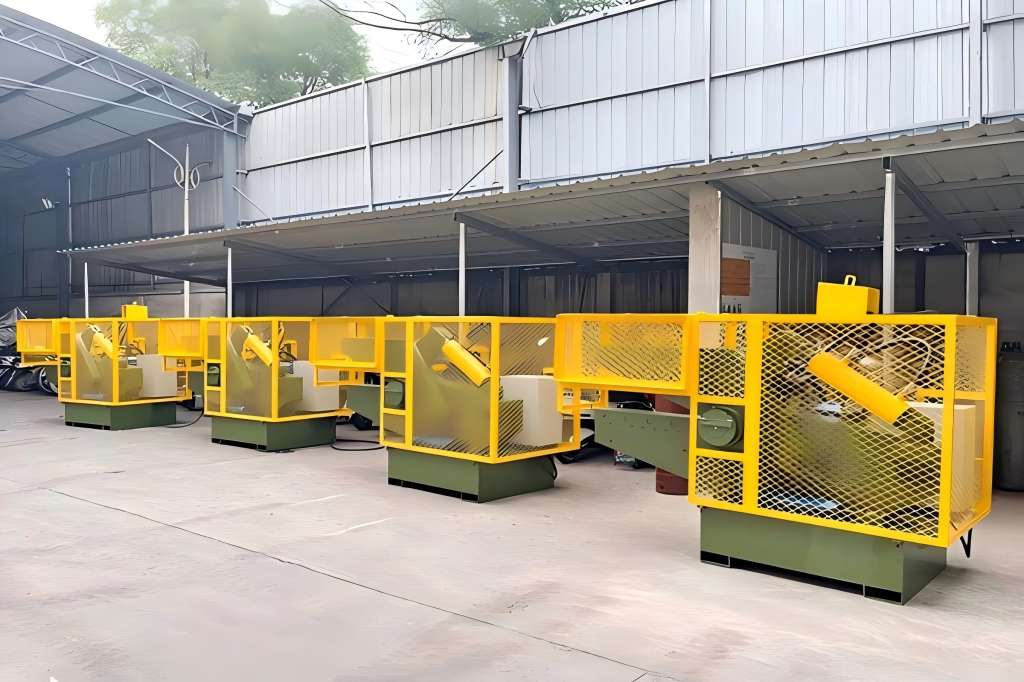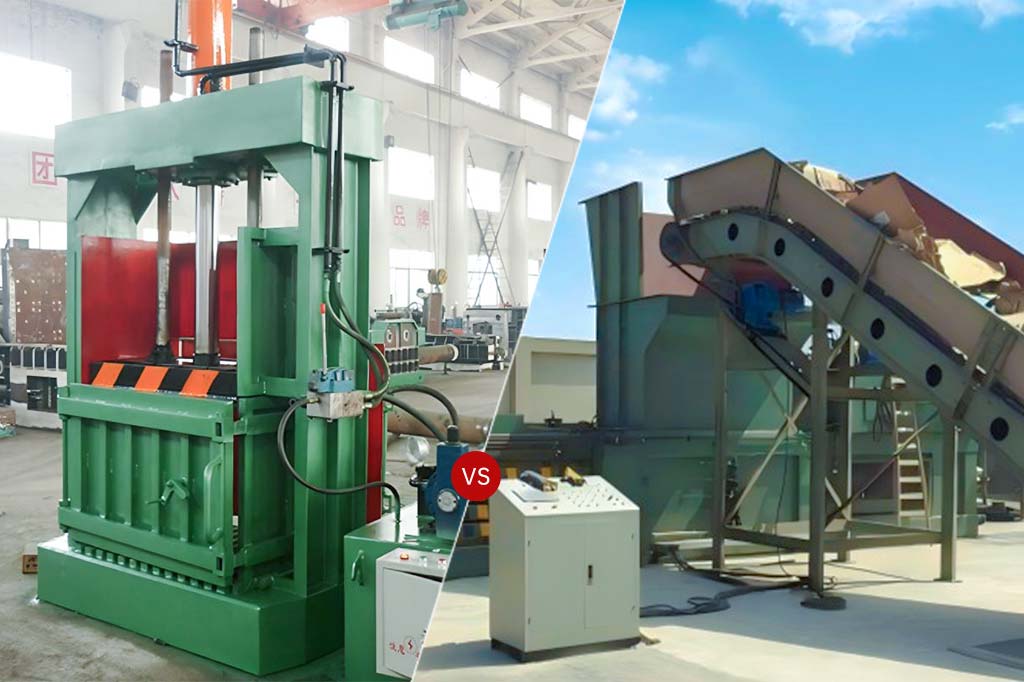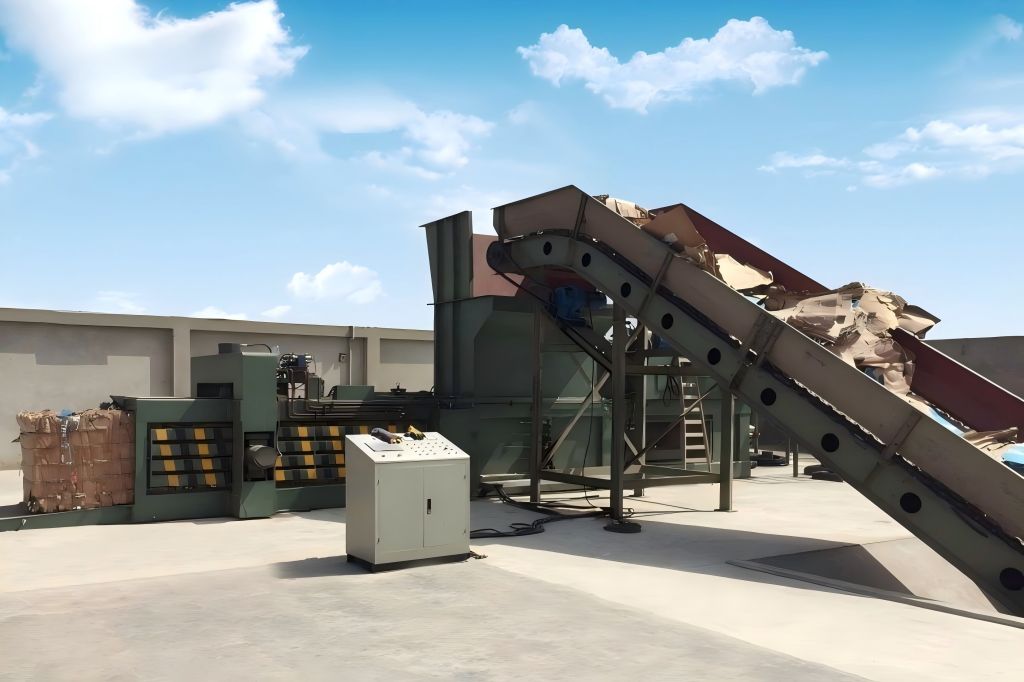Hydraulic metal shears are in high demand due to the need for precision and faster production in metalworking. They deliver unmatched cutting performance, from large construction beams to intricate automotive parts, making them essential across various industries in today’s manufacturing landscape.
This comprehensive guide explores the workings, types, components, and applications of hydraulic metal shears, offering insights into why they are so crucial in today’s manufacturing world.
What is a Hydraulic Metal Shear?
A hydraulic metal shear is a powerful cutting machine that uses hydraulic pressure to drive a blade through various types of metals. These machines are primarily used to cut large sheets, bars, and metal strips into smaller pieces, but they can also perform precise cutting operations for more intricate tasks.
Hydraulic shears are vital in industries such as construction, automotive, aerospace, and metal recycling, where heavy-duty and precise cutting is required.
How Does a Hydraulic Metal Shear Work?
The working principle of a hydraulic metal shear revolves around its use of hydraulic power mechanisms. Here’s a step-by-step overview of how these machines operate:
- Hydraulic System Activation: The process begins when the hydraulic system is activated. Hydraulic fluid (typically oil) is pressurized within a cylinder, which generates enough force to move a piston.
- Piston Movement: The piston, driven by the hydraulic pressure, moves forward. This piston is connected to a cutting blade, and as the piston extends, it pushes the blade down toward the metal.
- Cutting Action: As the blade comes into contact with the metal, it exerts immense pressure, shearing through the material. The hydraulic system provides smooth, consistent force, ensuring that the cut is clean and precise without distorting or damaging the material.
- Blade Retraction: After the cut is made, the hydraulic pressure is released, allowing the piston to retract. In preparation for the subsequent cutting cycle, this raises the blade back to its initial position.
The ability of hydraulic metal shears to produce high force with minimal energy consumption makes them ideal for cutting a variety of metals. The hydraulic mechanism provides better control over the cutting process, allowing operators to adjust force and speed based on material and thickness.
Hydraulic Metal Shear Types
There are various varieties of hydraulic metal shears, each suitable for handling different materials and applications. Below are the most common types of hydraulic metal shears:
Guillotine Shears
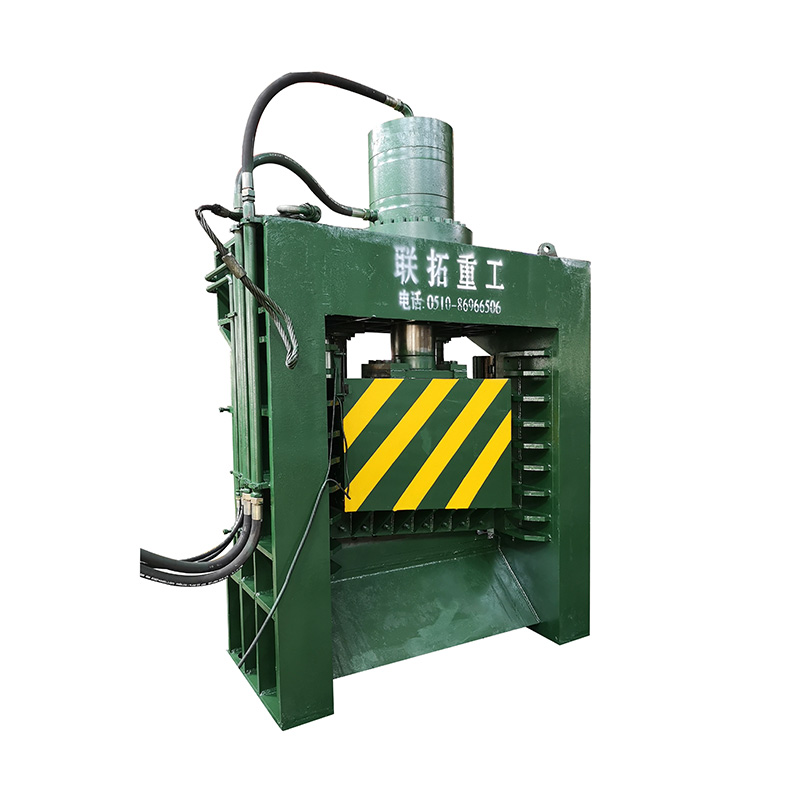
Guillotine shears are designed for cutting large sheets of metal in straight lines. They operate by using a straight, vertically moving blade that slices through the metal against a stationary lower blade.
This type of shear is widely used in sheet metal fabrication, particularly for cutting large steel or aluminum plates. Guillotine shears are prized for their ability to make clean, precise cuts on large pieces, making them indispensable in industries such as construction and heavy manufacturing.
Alligator Shears
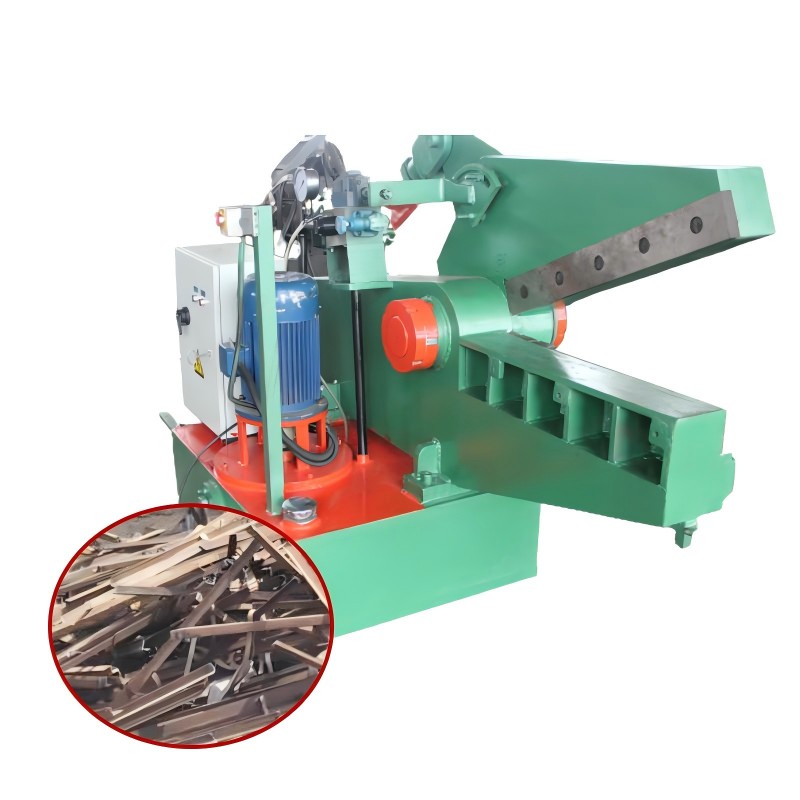
Alligator shears are named after their hinged, crocodile-like blade, which allows them to cut long pieces of metal such as rods, bars, and pipes. The jaw-like motion of the blade makes them highly effective for cutting metal scrap into smaller, more manageable sections.
These shears are often used in scrap metal recycling facilities, automotive dismantling operations, and steel mills. Their ability to handle long, irregular metal pieces efficiently makes them a favorite in recycling operations.
Gantry Shears
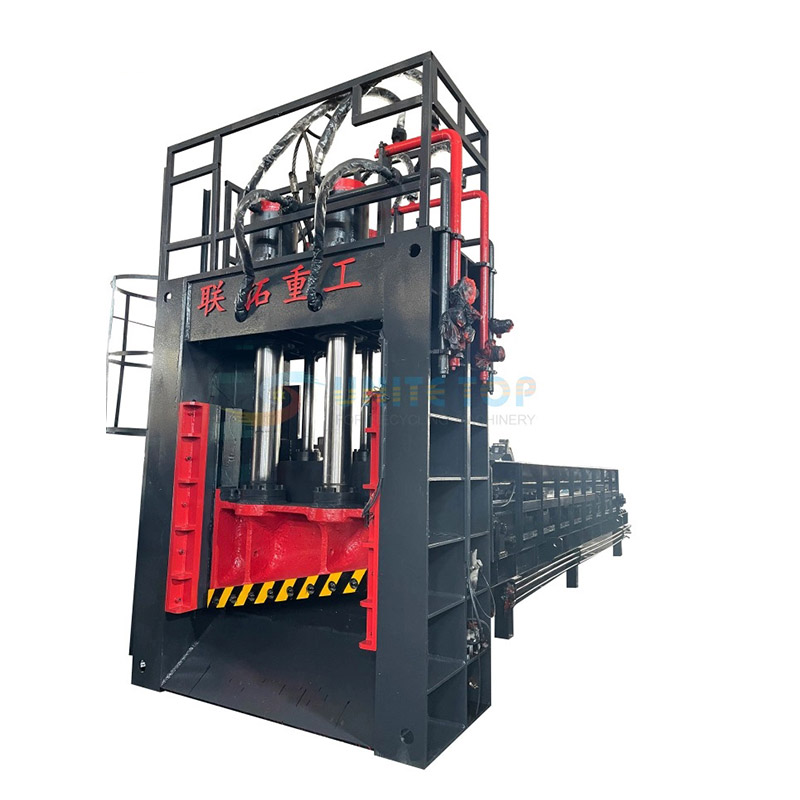
Gantry shears are heavy-duty machines designed to handle extremely large and thick metal plates. Mounted on a gantry frame, these shears provide exceptional stability and precision when cutting wide sheets or beams.
Their size and cutting power make them ideal for shipbuilding, metal recycling, and large-scale construction projects.
What Constitutes a Shear’s Major Parts?
Hydraulic metal shears consist of several critical components that work together to deliver powerful cutting performance. The primary parts of a hydraulic shear and their purposes are summarized in the table below:
| Component | Function |
| Hydraulic Cylinder | Provides hydraulic pressure to move the piston and cutting blade. |
| Cutting Blade | Cuts through metal using high-strength steel blades. |
| Piston | Drives the cutting blade forward using hydraulic pressure. |
| Frame | Supports the machine and absorbs the cutting force. |
| Hydraulic Pump | Generates hydraulic pressure by moving fluid through the system. |
| Control Panel | Allows control over cutting settings like speed and pressure. |
| Safety Guard | Protects operators by preventing contact with the blade. |
| Hydraulic Fluid Reservoir | Stores hydraulic fluid for continuous system operation. |
| Foot Pedal/Activation Switch | Activates the cutting mechanism for hands-free operation. |
| Blade Guide System | Keeps the cutting blade aligned during operation. |
| Back Gauge | Positions metal sheets for accurate cuts at preset lengths. |
| Hydraulic Accumulator | Stores extra hydraulic energy for smoother operation. |
| Cooling System | Prevents overheating by cooling hydraulic components. |
| Blade Adjuster | Allows fine-tuning of the blade’s position for precise cuts. |
| Scrap Ejector | Removes cut metal pieces to increase efficiency. |
| Light Curtain Sensors | Upon breaching the invisible boundary, the machine will shut off. |
| Lubrication System | Automatically lubricates moving parts to reduce wear. |
What Are the Materials of Shearing Machine Blades?
The blades in hydraulic metal shears must ensure durability and precision when cutting tough metals, made from specialized materials designed to withstand significant force, and friction, and ensure high performance. Below are the most common materials used in shearing machine blades:
- High-Speed Steel (HSS): Valued for hardness and heat resistance, retains sharpness when cutting tough metals like steel and aluminum, offering good wear resistance, ideal for high-production environments with frequent cutting demands.
- Carbide Steel: Extremely hard and durable, ideal for cutting abrasive materials like stainless steel and titanium. Resists high temperatures while maintaining sharpness, perfect for heavy-duty cutting tasks in industrial applications.
- Tool Steel: Tough and wear-resistant, offering a balance of hardness and flexibility. Often alloyed with tungsten or chromium, suitable for cutting a wide range of metals, providing durability in various industrial applications.
- Chromium-Molybdenum Steel (CrMo): Offers excellent wear and corrosion resistance. Chromium enhances corrosion protection, while molybdenum strengthens the blade. utilized in industrial settings where reliability, durability, and temperature tolerance are essential.
- Alloy Steel: Offers a balance of strength, hardness, and flexibility, suitable for general-purpose cutting. Can handle various materials with good performance and is more affordable than high-speed or carbide steel blades.
- D2 Steel: High-carbon, high-chromium tool steel with a reputation for toughness and resilience to wear. Retains sharpness over extended use, ideal for cutting non-ferrous metals like copper and aluminum in shearing machine blades.
- Stellite: Cobalt-chromium alloy offering excellent wear resistance at high temperatures. Highly corrosion and abrasion-resistant, suitable for cutting tough materials in specialized industrial applications where other blade materials may wear down quickly.
Blade Coatings for Additional Durability
In addition to the material itself, many shearing machine blades are coated with specialized coatings to enhance their performance and lifespan. Common coatings include:
- Titanium Nitride (TiN): Increases blade hardness and reduces friction, extending the blade’s life.
- Tungsten Carbide Coating: Adds an extra layer of durability for cutting abrasive materials.
- Ceramic Coating: Improves heat resistance and wear resistance, ideal for heavy-duty cutting.
How Thick Can Hydraulic Shears Cut?
Hydraulic shears efficiently cut metals of varying thicknesses, with cutting capacity determined by material type, properties, and machine hydraulic power. Below is a table of thickness and weight capacities for common materials:
| Material Type | Material Grade | Minimum Thickness (inches) | Maximum Thickness (inches) | Max Plate Capacity (lbs) | Cutting Tolerance (inches) |
| Mild Steel | Grade 250 | 0.02″ | 1.0″ | 11,000 lbs | ± 0.004″ |
| Stainless Steel | Grades 304, 316 | 0.03″ | 0.79″ | 9,900 lbs | ± 0.006″ |
| Aluminum | 6061, 7075 | 0.04″ | 1.38″ | 8,800 lbs | ± 0.008″ |
| Copper | C11000 | 0.03″ | 0.79″ | 6,600 lbs | ± 0.004″ |
| Brass | C26000 | 0.02″ | 0.71″ | 5,500 lbs | ± 0.006″ |
| Titanium | Grades 5, 2 | 0.04″ | 0.59″ | 4,400 lbs | ± 0.008″ |
| Nickel Alloys | Inconel 625, 718 | 0.06″ | 0.47″ | 7,700 lbs | ± 0.008″ |
| High-Strength Steel | ASTM A514 | 0.05″ | 0.63″ | 9,900 lbs | ± 0.006″ |
Hydraulic shears are vital tools in metalworking industries, allowing operators to cut materials with precision and efficiency while maintaining safety and performance.
Key Features
Hydraulic metal shears are equipped with several features that distinguish them from other cutting machines. This table weighs the advantages and disadvantages of several important characteristics:
| Feature | Advantages | Disadvantages |
| Cutting Capacity | Can cut a wide range of metal thicknesses, including thick steel plates. | Higher energy consumption when cutting extremely thick materials. |
| Adjustability | Allows for precise control of cutting angles and lengths. | Requires skilled operators to maximize precision. |
| Hydraulic Power | Provides greater cutting force than mechanical systems, ideal for tough metals. | More complex system, higher maintenance requirements (e.g., hydraulic leaks). |
| Safety Features | Designed to safeguard operators with emergency stops and safety guards. | Safety features may slightly slow down the cutting process. |
| Automation | Programmable settings allow for high-volume, automated production. | Installing and maintaining an automation system can be expensive. |
Industrial Uses
Hydraulic metal shears are essential tools in various industries, offering high efficiency and precision in metal cutting. They play a key role in metal recycling, construction, and manufacturing, where precise, efficient cutting is critical to production.
- Metal Recycling: Hydraulic shears play a vital role in the recycling industry by cutting large metal scrap pieces into smaller, more manageable sizes for processing. This encourages environmental sustainability and waste reduction.
- Construction: In the construction sector, hydraulic shears are used to cut metal beams, plates, and pipes for structural purposes. The ability to make precise cuts ensures that the materials meet exact specifications, which is essential for the safety and integrity of buildings and infrastructure.
- Manufacturing: In the manufacturing sector, particularly in the automotive, aerospace, and electronics industries, precision is crucial. Hydraulic shears are used to cut metal parts to exact dimensions, ensuring that components fit perfectly into larger systems. For instance, in the automotive industry, hydraulic shears cut body panels and structural parts from metal sheets, improving productivity and reducing waste.
Choosing the Right Hydraulic Metal Shear for Your Needs
A number of considerations must be taken into account when choosing the best hydraulic metal shear, including as the kind of metal being processed, the amount of output, and the space that is available in your facility. Here are some tips for choosing the best shear for your needs:
- Material Type and Thickness: Consider the type of metal you will be cutting and its thickness. For example, guillotine shears are ideal for cutting large sheets of metal, while alligator shears are better suited for cutting long rods and strips.
- Production Volume: If you need to process large quantities of metal, look for a shear that offers high cutting speed and automation options. Shears that are automated can save labor costs and boost productivity.
- Machine Size and Space: Ensure that the machine fits within your workspace. Portable shears are ideal for smaller workshops, while larger gantry shears may require more floor space.
- Budget and Features: Determine your budget and prioritize the features you need. While automation and safety features can add to the cost, they can also improve productivity and safety in the long run.
Maintenance and Safety Tips
The lifetime and secure functioning of hydraulic metal shears depends on routine maintenance and adherence to safety procedures. Here are some key tips:
- Regular Maintenance: Lubricate moving parts regularly, check hydraulic oil levels, and inspect cutting blades for wear. Frequent maintenance increases the machine’s longevity and helps prevent malfunctions.
- Safety Measures: Before using the shear, always put on the proper protective clothing, such as gloves and safety glasses. Make sure operators adhere to all safety procedures and receive the appropriate training to prevent mishaps.
- Common Problems: Common issues with hydraulic shears include hydraulic leaks and worn blades. To avoid more serious mechanical failures, these issues need to be fixed right away. Early detection of possible problems can be facilitated by routine inspections.
Conclusion
Hydraulic metal shear machines are indispensable tools in industries that require precision, efficiency, and power in metal cutting. By selecting the right shear, maintaining it properly, and following safety protocols, businesses can maximize productivity and ensure safe, efficient operations.

